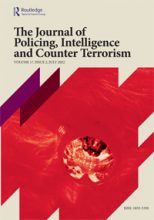Any intervention in the violent acts of terrorist groups requires accurate differentiation among the groups themselves, which has largely been overlooked in their study beyond qualitative work. To explore the notion of terrorist group differentiation, the online communication of six violent groups were collected: Al-Nusrah Front, al-Qa’ida Central, al-Qa’ida in the Arabian Peninsula, Hamas, Islamic State of Iraq and Syria, and Taliban. All six groups embedded their ideology in digitised documents that were shared through multiple online social networks and media platforms in attempts to influence individuals to identify with their beliefs. The way these groups constructed social roles for their supporters in their ideology was proposed as a novel way to differentiate them and key term extraction was used to find important terms referenced in their communication. Experimental classification was devised to find the highest-ranking roles capable of prediction. Role terms produced high accuracy scores across experiments differentiating the groups (95%CI: 95–98%), with varying inter-group and intra-ideological differences emerging from authority-, religion-, closeness-, and conflict-based social roles. This suggests these constructs possess strong predictive potential to separate terrorist groups through nuanced expressions observed in their communication behaviour and advances our understanding of how these groups deploy harmful ideology.
